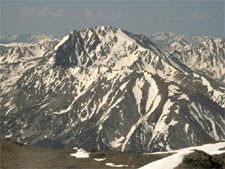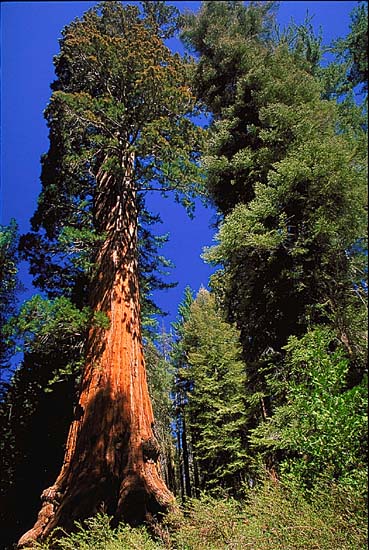

Cenozoic Elevation of the Rocky Mountains
Introduction
Until recently, the commonly accepted tectonic history of the western United States included a period of regional uplift in the Late Cenozoic. The recent, large-scale uplift was thought to affect a region roughly 1600 km across, from the Sierra Nevada to the Great Plains, lifting some areas as much as 2 km in as little as 5 m.y. Evidence for this uplift came dominantly from interpretations of geomorphological and paleobotanical data; a widespread of increased sedimentation, in addition to apparently low altitudes prior to the Miocene, led researchers to believe that post-Miocene uplift had been dramatic. Recent uplift was so entrenched in the tectonic story that global climate models were modified to include the effects of uplift of a large "plateau" in the western U.S. (e.g., Ruddiman and Kutzbach, 1989).
In the last few decades, however, both new data and new interpretations have cast considerable doubt on the inferred Late Cenozoic uplift. The argument against recent uplift attacks both the geomorphological and paleobotanical evidence and claims that a dramatic change in climate–rather than a tectonic event–may have been what shaped the western U.S. through the Late Cenozoic (Molnar and England, 1990). The question has not been settled, however, largely because the nature of the data involved--largely geomorphological and sedimentological--makes it quite difficult to distinguish between a tectonic event and a climatic event (Molnar and England, 1990). One way of addressing this problem is to study paleoaltitude indicators and try to constrain the formation of high-altitude topography in time.
The sections that follow are a summary of the evidence both for and against Late Cenozoic uplift in the western U.S., specifically addressing paleobotanical methods as applied to Eocene and Oligocene elevations of the Rocky Mountains of Colorado. First, the history of the debate is described, with particular attention to the assumptions and interpretations that led to the traditional view of recent uplift. The section on paleobotanical methods describes the several different ways researchers have used fossil flora to determine paleoclimates and paleoelevations; the Florissant fossils of Colorado provide a specific example. The final section summarizes the current status of the "uplift versus climate" debate in the Rocky Mountains, concluding that the paleobotanic evidence supports high elevations long before 5-10 m.y. ago and thus the signatures of erosion and sedimentation could be better explained by a change in climate.
Kali Wallace
Department of Geological Sciences
University of Colorado
Boulder, CO 80309